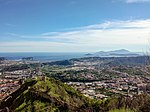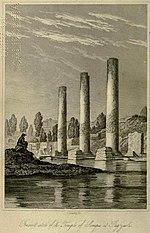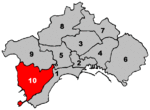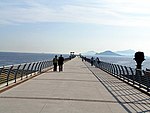Accademia Aeronautica
AC with 0 elementsAir force academiesItalian Air ForceMilitary academies of Italy

The Accademia Aeronautica is the Italian Air Force Academy, the institute for the training of Air Force officers. It's located in Pozzuoli in the province of Naples, in the Italian region of Campania. Among the oldest aviation academies in the world, it was founded in 1923. In its academic programs, the Academy coordinates with the nearby University of Naples Federico II. Admission to the Academy is subject to the passing of a test open to all Italian citizens between 17 and 22 years old, with a high school diploma. The selection process, which happens between February and September, includes an examination, a medical check, and written and oral tests.
Excerpt from the Wikipedia article Accademia Aeronautica (License: CC BY-SA 3.0, Authors, Images).Accademia Aeronautica
Geographical coordinates (GPS) Address Nearby Places Show on map
Geographical coordinates (GPS)
| Latitude | Longitude |
|---|---|
| N 40.822 ° | E 14.141 ° |
Address
80078 , Rione La Solfatara
Campania, Italy
Open on Google Maps










